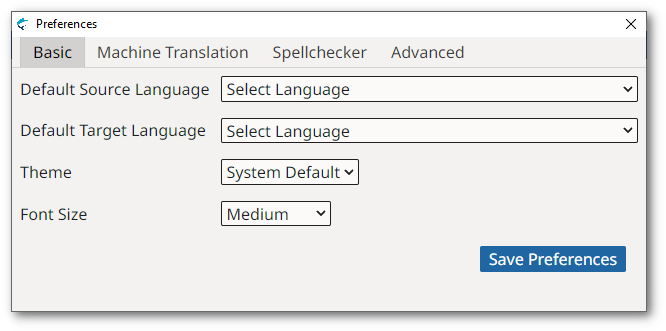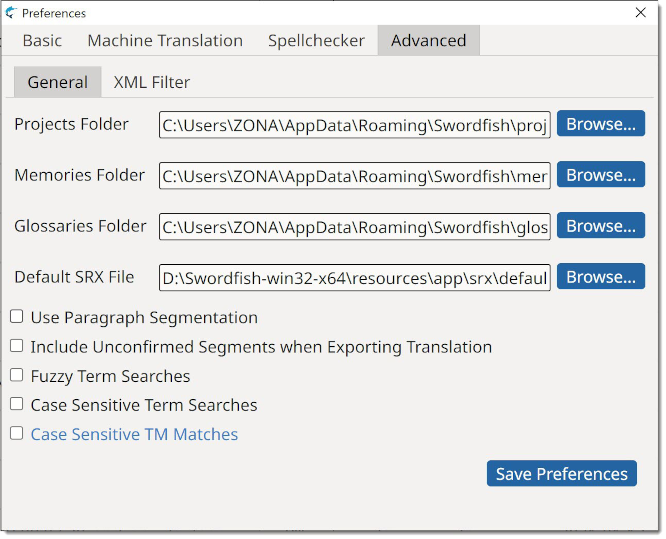Advanced Settings
Follow these steps to configure segmentation options, terminology searches preferences and XML Filter settings.
About this task
Swordfish ships with a set of segmentation rules in SRX format that supports 16 languages and
their variants. You can also select your own SRX file for processing your
documents.
An extensive XML catalog that supports the most common XML grammars and document
types is included in Swordfish. If you work with custom versions of DITA or other
special XML grammars, you can select your own XML catalog file for processing your
documents and configure the XML Filter to handle the elements defined in your
grammars.
Procedure
- On macOS, select on the menu or press [
Cmd + ,]. - On Windows or Linux main menu, select .
The Preferences dialog appears:
- On macOS, select on the menu or press [
- Select the Advanced tab.Preferences dialog switches to:

- If you want to change storage locations for your projects, memories or
glossaries, enter the desired paths on the Projects
Folder, Memories Folder and
Glossaries Folder text boxes or click the associated
Browse... buttons to select folders from the file
system.Avoid using folders that could be modified by other programs while you work.
- If you want to use a custom SRX file for segmentation, type its location on the Default SRX File text box or click the Browse... button next to it for selecting a file from the file system.
- Select the Use Paragraph Segmentation checkbox if you prefer to translate complete paragraphs instead of sentences.
- Swordfish uses the content of the source column by default for unconfirmed segments. Select the Include Unconfirmed Segments when Exporting Translation checkbox if you want to use any text that is in the target column, regardless of its state, when generating translated documents.
- By default, Swordfish looks for exact terms, ignoring letter case, when searching in glossaries. Select the Fuzzy Term Searches checkbox to allow searching for terms using a similarity threshold of 60%.
- Select the Case Sensitive Term Searches checkbox to consider letter case differences when searching for terms.
- Select the Case Sensitive TM Matches checkbox to consider letter case differences when retrieving TM matches from memories.
- Select the Automatically Confirm Propagated Segments checkbox to let the system confirm segments automatically propagated that are a 100% match. When this option is disabled, translations are inserted but not confirmed for 100% matches.
- Click on the Save Preferences button to save your changes.